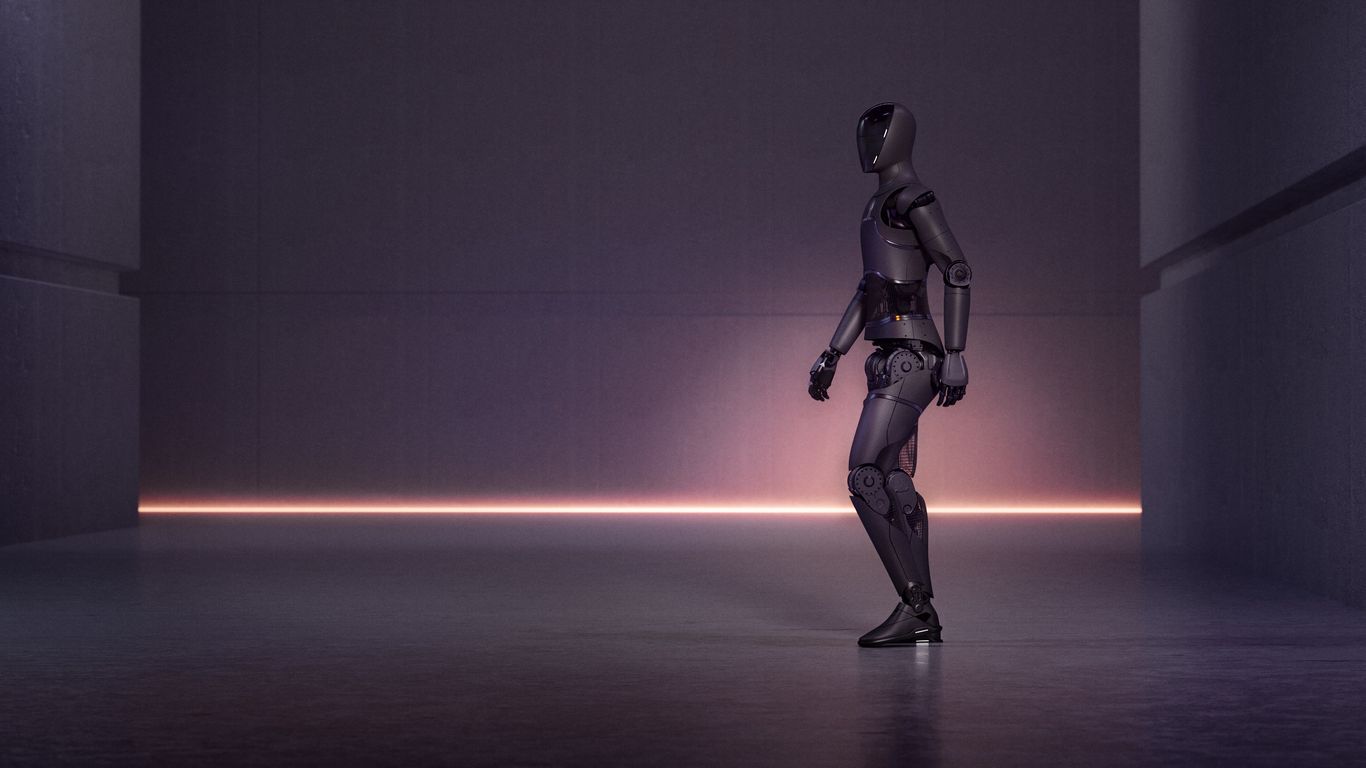[ad_1]

A rendering of Figure 01, a humanoid robot being built by a startup called Figure. Image courtesy of Figure
Human-shaped robots with dexterous hands will be staffing warehouses and retail stores, tending to the elderly and performing household chores within a decade or so, according to a Silicon Valley startup working toward that vision.
Why it matters: Demographic trends — such as a persistent labor shortage and the growing elder care crisis — make fully-functioning, AI-driven humanoid robots look tantalizingly appealing.
- Companies such as Amazon are reportedly worried about running out of warehouse workers, whose jobs are physically and mentally demanding with high attrition.
Driving the news: A heavy-hitting startup called Figure, which just emerged from stealth mode, is building a prototype of a humanoid robot that the company says will eventually be able to walk, climb stairs, open doors, use tools and lift boxes — perhaps even make dinner.
- The company is the brainchild of Brett Adcock, a tech entrepreneur who previously founded Archer Aviation (a “flying taxi” maker that went public) and Vettery (an online hiring marketplace that he and a partner sold for $100 million).
- He’s assembled an all-star team of 40, including leading roboticists from Boston Dynamics and Tesla.
- They’ve moved into a 30,000-square-foot facility in Sunnyvale, California, where they plan to set up a mock warehouse to test their prototype.
- “We just got done in December with our full-scale humanoid,” Adcock tells Axios. “We’ll be walking that in the next 30 days.”
Where it stands: The prototype — called Figure 01 — stands about 5’6″ and weighs 130 pounds.
- It’ll be fully electric, run for five hours on a charge and is intended for warehouse use.
- “We think we can get into commercial operation within a few years,” Adcock tells Axios. “We should be able to do most jobs — physical labor jobs that humans don’t want to do.”
Yes, but: Humanoid robots are staggeringly difficult to build and engineer to perform reliably.
- There are a host of design challenges, from simple balance to replicating human movements.
- “We need to be able to push it and have it not fall down,” says Adcock about the Figure 01. (Boston Dynamics has plenty of robot blooper videos on YouTube.)
- From there, programming a robot to move boxes in a warehouse is a lot easier than, say, engineering it to cook a meal.
What they’re saying: “We face high risk and extremely low chances of success,” Adcock wrote in a mission statement.
- But he exuded optimism in an interview: “This stuff just wasn’t possible 10 years ago — I think it’s possible now.”
- A decade ago, “you just didn’t have the energy or the power density to make this work.”
Reality check: Engineering robots is expensive. Adcock says he is self-financing Figure: “I put in $10 million last year.”
Zoom in: Goldman Sachs put out an initial research report on the humanoid robot sector in November, estimating that “a $6 billion market (or more) in people-sized-and-shaped robots is achievable in the next 10 to 15 years.”
- This market “would be able to fill 4% of the projected U.S. manufacturing labor shortage by 2030 and 2% of global elderly care demand by 2035.”
The big picture: The modern quest to build a robot that looks and feels like a human began in earnest more than a decade ago, with Boston Dynamics’ Atlas — which tech writer John Markoff once compared to C-3PO from “Star Wars” — in the lead.
- Today, Atlas and Xiaomi’s CyberOne tilt more toward research than commercial applications.
- Tesla’s Optimus humanoid robot is likely to be Figure’s chief competition — Elon Musk has described similar ambitions to Adcock’s for the “Tesla Bot.” (See it in action here.)
- Another competitor: Agility Robotics, whose humanoid robot, Digit, is also aimed at warehouse work. (Watch it perform here.)
But there’s robot-fever everywhere. At SXSW in Austin, Disney just unveiled a rollerblading, somersaulting bunny rabbit bot that’s meant to look like Judy Hopps from “Zootopia.”
The bottom line: It will take decades for humanoid robots to be able to replicate the sophisticated things our bodies can do, but visionaries are hard at work trying to make it happen.
[ad_2]
Source link
